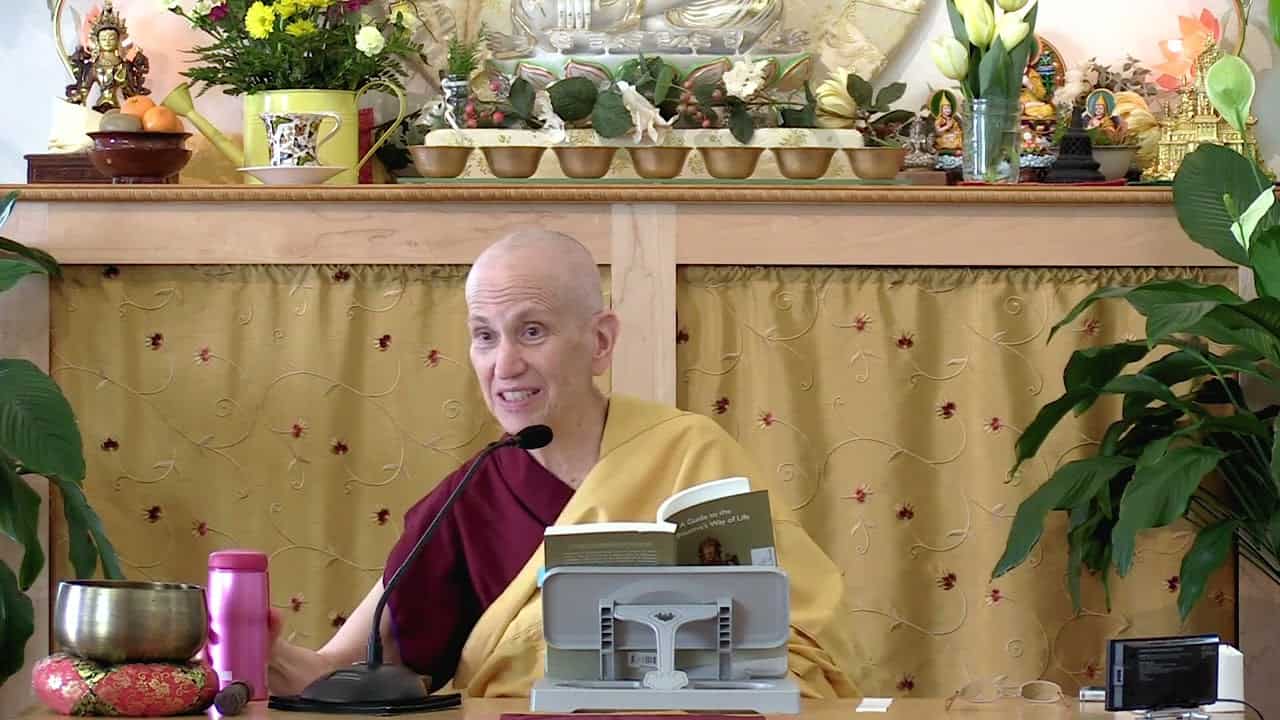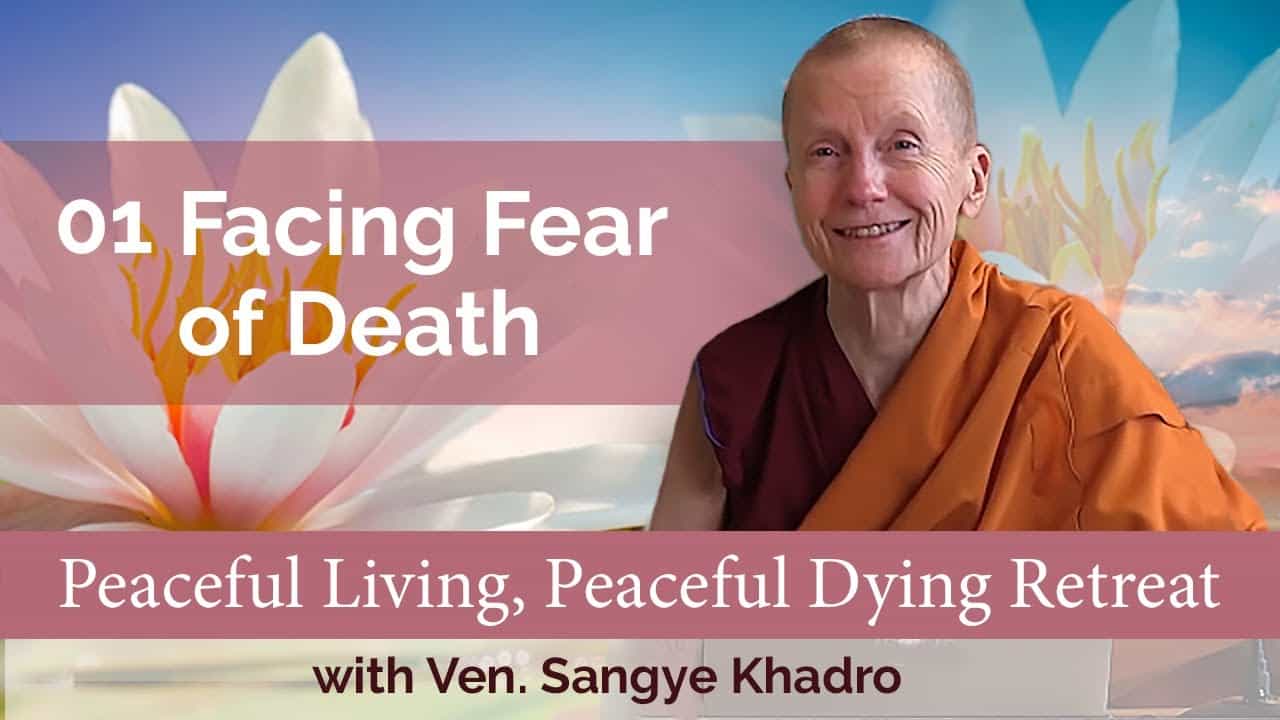The root afflictions: Attachment
17 Samsara, Nirvana and Buddha Nature
Part of an ongoing series of teachings (retreat and Friday) based on the book Samsara, Nirvana, and Buddha Nature, the third volume in The Library of Wisdom and Compassion series by His Holiness the Dalai Lama and Venerable Thubten Chodron.
- The Buddhist definition of afflictions
- Real dharma is combating the afflictions
- What attachment is and why it leads to unhappiness
- The difference between attachment and aspiration
- Virtuous and nonvirtuous forms of craving
- Questions and answers
- How do you know if we have attachment or aspiration to virtuous results?
- Is anger at the afflictions virtuous?
Samsara, Nirvana, and Buddha Nature 17: Attachment (download)
Contemplation points
- What is the difference between compassion and personal distress or pity? Looking into your own mind, differentiate between the two, making personal examples of each. How did they arise? When they arise, what are the different effects of them on your mind?
- The text says,“We need to learn everything we can about the enemy—the afflictions that destroy our own and others’ happiness. But simply learning about the afflictions is not sufficient; we must also combat them by hearing, thinking, and meditating on their counterforce as described in the Buddha’s teachings. Doing this is the crux of Dharma practice.” Really spend some time with this. Is this how you are practicing in your life? Are you focused on your internal or external world? What can you do to redirect your effort to focus on combating the afflictions?
- Do a life review—look at the times when attachment was in your mind. What were you doing? How were you living? What decisions did you make? After you looked at that person/idea/job through the eyes of attachment, how long did that view last? Did you at some point change your mind about that person/situation/place?
- The more we’re attached to something, the more we’re set up for unhappiness when the opposite inevitably comes. Bring to mind some personal examples of this.
- What is the difference between attachment and aspiration? Why is it important to be able to differentiate between the two?
Venerable Thubten Chodron
Venerable Chodron emphasizes the practical application of Buddha’s teachings in our daily lives and is especially skilled at explaining them in ways easily understood and practiced by Westerners. She is well known for her warm, humorous, and lucid teachings. She was ordained as a Buddhist nun in 1977 by Kyabje Ling Rinpoche in Dharamsala, India, and in 1986 she received bhikshuni (full) ordination in Taiwan. Read her full bio.


